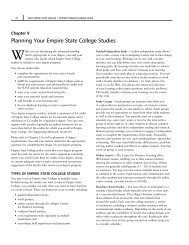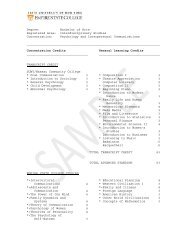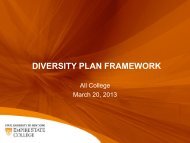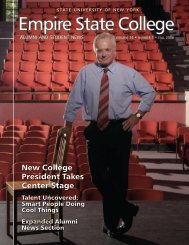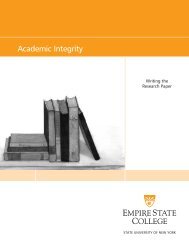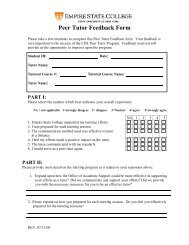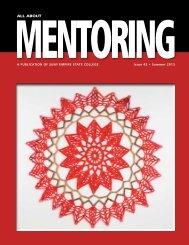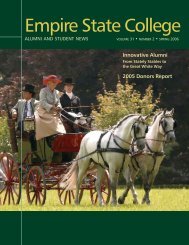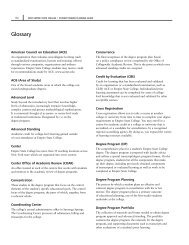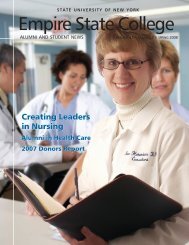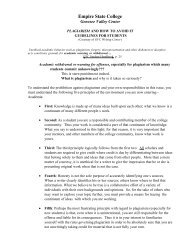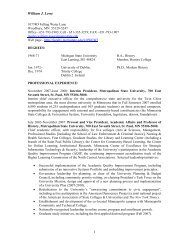Academic Plan 2011-2015 (PDF 524kB) - SUNY Empire State College
Academic Plan 2011-2015 (PDF 524kB) - SUNY Empire State College
Academic Plan 2011-2015 (PDF 524kB) - SUNY Empire State College
Create successful ePaper yourself
Turn your PDF publications into a flip-book with our unique Google optimized e-Paper software.
<strong>SUNY</strong> <strong>Empire</strong> <strong>State</strong> <strong>College</strong>: <strong>Academic</strong> <strong>Plan</strong> <strong>2011</strong> - <strong>2015</strong> 23more structured teaching and learning environments where appropriate. In addition to fully onlinemodes of learning, open and blended modes will create and enrich face-to-face learning experiences byenhancing the resources provided to all of our students.We also propose developing a system that would allocate limited and specialized faculty expertise moreefficiently to learners who would benefit most. For example, how might we better coordinate the workof faculty with math expertise to meet the needs of students at the introductory and most advancedlevels, both regionally and online? (See Faculty <strong>Plan</strong>ning and Development, Assess the <strong>State</strong> of theFaculty section).Finally, in terms of undergraduate educational planning, Notes DP, DP <strong>Plan</strong>ner and PLA <strong>Plan</strong>ner arecurrently separate applications that need to be linked with single sign-on and improved consistency. Inaddition, there is no technology application to house the rationale essay. The academic plan calls forthe development of a degree audit system that should be implemented collegewide and utilized at theearliest point in a student’s educational experience. Additionally, the college will benefit from the useof ePortfolio tools to enhance students’ degree planning experience abd facilitate the assessment ofstudent learning outcomes in an efficient and effective way.Objective B1.3: Create welcoming environmentsTo create effective, rich and flexible learning environments, academic environments must be welcomingto all students, faculty and staff. As an institution of higher education, we seek to foster an academicand workplace climate that exhibits the following characteristics: the practice of free and open speech,particularly with regard to academic matters; a will to resolve knotty issues by inclusive and respectfuldebate; time to resolve these issues; and, finally, respect for all members of the college community,including faculty, professional employees, support staff, students and alumni.At the most basic level, the college as an organization must constantly strive to foster civility, and theSenate’s Ad Hoc Committee on Civility has initiated this important work by providing introductory leveltraining on civility awareness for college employees. The academic plan supports the development ofadditional training programs on advanced issues of civility, including the effective management ofmeetings, and tools for helping college members address incivility when it happens to them or othersin their immediate surroundings. Finally, the academic plan seeks the institutionalization of this trainingfor all employees and the extension of it to students.Beyond institutionalizing a climate that is both respectful and civil, a welcoming environment isone that also celebrates and honors differences within and between various groups. The academicplan seeks to honor the diversity of our various communities by supporting the following initiatives:recruiting and retaining members of diverse groups to the college, including both students andemployees; enhancing diversity in academic instruction and planning; and creating supports for studentand alumni activities that celebrate difference.




